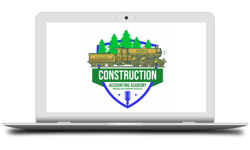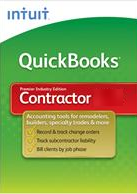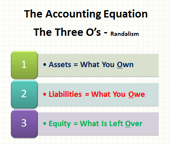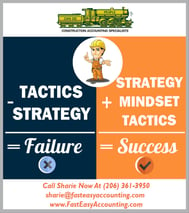2. What are the components of COGS?
COGS isn't one-size-fits-all. It includes different types of costs depending on your business.
Here are the main components typically included in COGS:
- Materials: Raw ingredients or parts used to provide your service
- Payroll: The wages you pay to employees directly involved in production
- Manufacturing Overheads: Indirect costs required to produce services, such as equipment depreciation or utility costs.
Note
General overheads, such as office or marketing costs, are not included in COGS—only expenses tied directly to production count.
3. How do I calculate COGS?
Fortunately, calculating COGS follows a straightforward formula:
COGS = Beginning inventory + Purchases during the period – Ending inventory
Breaking it down:- Beginning inventory: The inventory value on hand at the start of the accounting period.
- Purchases: All costs for new inventory bought or manufactured during the period.
- Ending inventory: The value of unsold inventory at the period's end.
Example Calculation
Imagine you run a small boutique that sells handmade gifts. If:
- Your beginning inventory is $5,000,
- You spent $8,000 on materials and production, and
- Your ending inventory is $2,000,
Then your COGS would be:
$5,000 + $8,000 – $2,000 = $11,000
This $11,000 represents the cost of creating the products you sold during the period.
But wait - that is for a retail business. Simple. What about construction?
Direct Costs are tied to the jobs (field labor, materials, and other cost items). Office materials (pencils, paper, toner, etc.) are overhead. Yes, an accountant could say these many pencils are used in the field and that notepad is used in the truck.
The answer is the dividing line of the direct costs to the job: the Costs of Goods Sold (COGS).
That is why we've created our Chart of Accounts, which you can use inside QuickBooks, depending on your type of construction business.
Most COGS accounting methods you will find are for inventory valuation, which is confusing to most contractors.
Confusion always arises about the material. A construction contractor may purchase material and resell it to their customer at cost, thinking it is a reimbursable expense. (You lose money when doing this.)
Remember, all invoices to the Customer (Retail, General Contractor, Spec Builder, Developer) are income. Washington State has a clear explanation. If the words are on the invoice, then the invoice is either taxable or non-taxable based on other factors. Every line item on a customer invoice is income.
Purchases for the material are the Cost of Goods Sold or expenses if you are short-cutting your accounting. I have seen financial statements backed out because they will reflect reimbursable income as a negative number, thereby showing it as a deduction. (The net effect is double-dipping on the expense side.) The cause is that the accounting software is not being correctly set up. We fix bad QuickBooks setups for Construction Contractors.
New Construction Home Building is another area of confusion. In the mind of many construction contractors, a Spec home is any new house being built for resale. That is true; it is a New Construction House. The question is on the construction accounting side. For the Owner and Developer (who might be the General Contractor running the job), it is a Spec Home.
For the General Contractor who is building a New Construction Home for a Developer, it is NOT a Spec Home. Why might it seem the same as both are New Construction Houses? The question to be answered is, "Who owns the house?" - It is a Spec House in the accounting system for THE OWNER.
If the General Contractor does not own the house, then from the accounting side for that specific General Contractor, the house is a Custom Home with an owner who is not the General Contractor.
Suppose the General Contractor or developer owns the new house being built. In that case, it is a Spec House in the Accounting System. All costs roll up into WIP (Work-In-Process) and convert to COGS when the house is sold, not before. Recognize expenses when the home sells. Otherwise, expenses one year and sales the next equals taxes.
In Washington State, all construction contractors working for a spec builder must collect sales tax on all services (labor and material) when billed by the general and trade construction contractors.
In Washington State, all Construction Contractors working on Custom Homes, Residential or Commercial Projects, large or Small Remodels, or Handyman Projects can accept a reseller permit from the General Contractor. The general contractor bills and collects sales tax from the Owner.
In Washington State, Contractors must collect sales tax on all retail projects, including Labor, Materials, and others. Sales tax must be collected on every line item. Customer Discounts can be given for any reason.
And that is just for one state.
Pro Tip
Consult with your accountant to identify the best method for your business—tax implications vary by approach.
4. Why does understanding COGS matter?
Knowing your COGS is a game-changer for managing and growing your business. Here are some ways it benefits you:
- Profitability analysis - COGS is crucial for calculating gross profit. Subtracting COGS from revenue reveals how much your products contribute to your bottom line.
- Pricing strategy - Understanding how much a specific project costs allows you to set prices that cover expenses while leaving room for profit.
- Financial reporting - COGS is necessary for accurate income statements and tax reporting. It also demonstrates operational efficiency, which is key for attracting investors or securing loans.
- Tax benefits - COGS are deductible, reducing your taxable income. The more precise your calculations, the better-positioned you'll be during tax season.
5. How can your accountant help
Managing COGS can be complex, but you don't have to go through it alone. Your accountant is your best ally when navigating this process.
They can:
- Help you set up your Contractor Chart of Accounts
- Ensure all eligible expenses are accounted for (and not missed!).
- Revise your tax strategy while staying compliant with regulations.
One of the most dangerous and difficult steps in setting up the Chart of Accounts is during QuickBooks setup, especially for contract service-based businesses. Get this one thing right, and your QuickBooks for contractors can generate useful financial and job costing reports. If you get it wrong, you will never get useful reports, no matter who handles your contractor's bookkeeping services needs. The reports you do get could lead you to make decisions based on insufficient information that could destroy your entire construction company.
A thought
Understanding your Cost of Goods Sold isn't just an accounting exercise—it's the foundation for business success. Calculating and tracking COGS effectively will empower you to make better pricing, profitability, and growth decisions.
Why struggle with numbers when you can partner with someone who lives and breathes construction accounting? Freeing up your time lets you focus on growing your business. You are never too small for us to help, and we can help you begin with your first day in business.
I am looking forward to being of assistance.
About The Author:
![]() Sharie DeHart, QPA, is the co-founder of Business Consulting And Accounting in Lynnwood, Washington. She is the leading expert in managing outsourced construction bookkeeping and accounting services companies and cash management accounting for small construction companies across the USA. She encourages Contractors and Construction Company Owners to stay current on their tax obligations and offers insights on managing the remaining cash flow to operate and grow their construction company sales and profits so they can put more money in the bank. Call 1-800-361-1770 or sharie@fasteasyaccounting.com
Sharie DeHart, QPA, is the co-founder of Business Consulting And Accounting in Lynnwood, Washington. She is the leading expert in managing outsourced construction bookkeeping and accounting services companies and cash management accounting for small construction companies across the USA. She encourages Contractors and Construction Company Owners to stay current on their tax obligations and offers insights on managing the remaining cash flow to operate and grow their construction company sales and profits so they can put more money in the bank. Call 1-800-361-1770 or sharie@fasteasyaccounting.com
OUTSOURCED ACCOUNTING FOR
THE BUSY CONTRACTOR
IN A MOBILE ENVIRONMENT
 |
 |
 |
 |
Download the Contractors APP today from the App Store or Android Store
Access Code: FEAHEROS
Click here to download the App on Android:
Click here to download the App on iOS:
Simply scan the QR code or search for ‘MyAccountants’ in the App Store and enter the Access code: FEAHEROS to utilize the powerful App features and capabilities, and benefit from having our Construction Accounting App at your fingertips, 24/7."
PS: Even if you are not a Construction Contractor you will find a plenty of benefits in the app so we invite you to download it too! It's Free so why not?





























